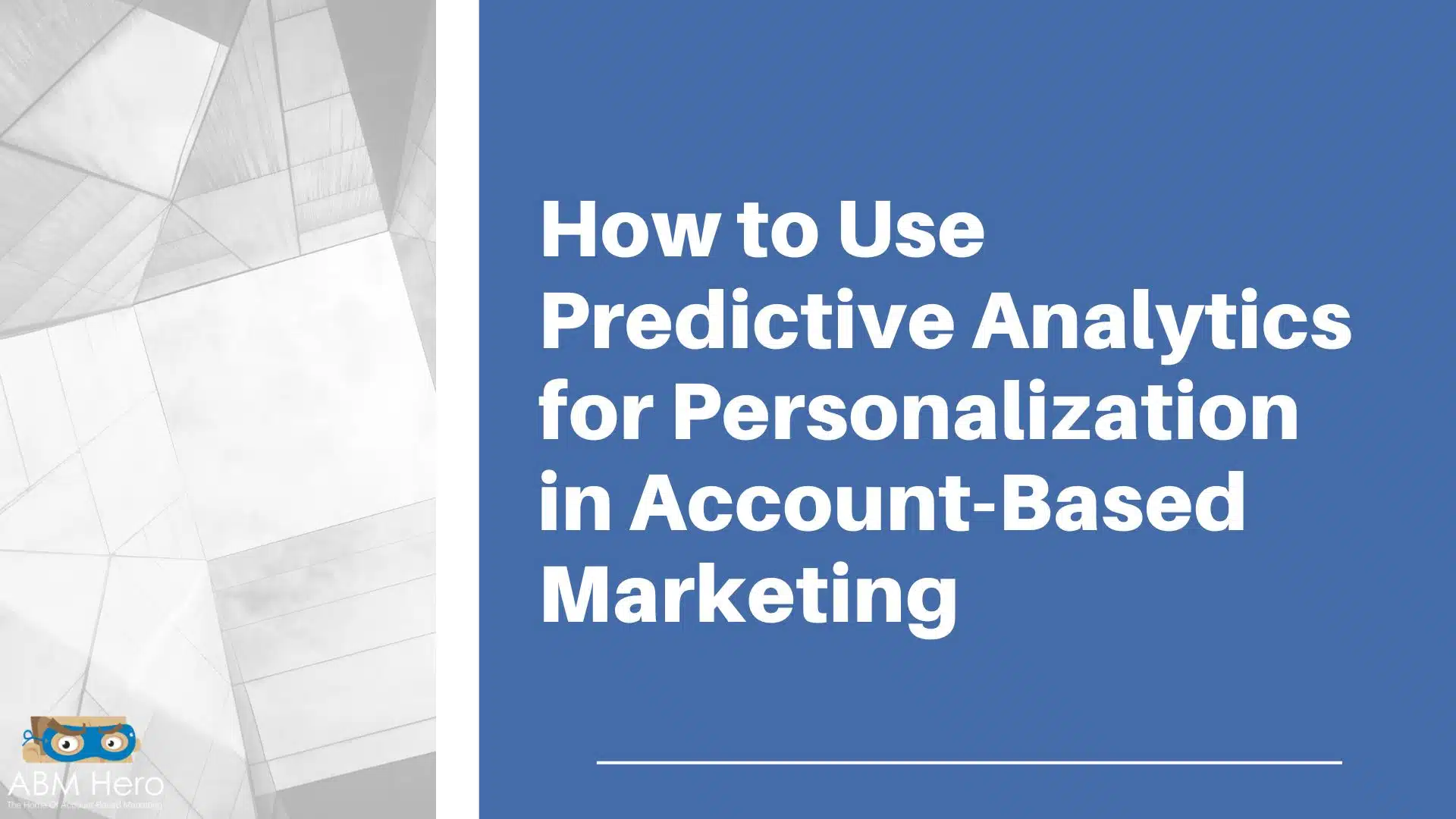As a B2B decision-maker, you know that personalization is key to successful account-based marketing (ABM) campaigns.
However, with so much data available, it can take time to identify the insights that will truly make a difference in your personalization tactics.
That’s where predictive analytics comes in.
With the aid of sophisticated algorithms and machine learning methods, predictive analytics can help you make sense of your data and unlock insights that can transform how you engage with your target accounts.
In this blog post, we’ll explore why predictive analytics is essential for improving personalization tactics in ABM and how you can leverage this powerful tool to achieve better results and drive revenue growth for your business. So let’s dive in!
Understanding Predictive Analytics and Personalization
Predictive analytics is a data-driven approach that uses advanced algorithms and machine learning techniques to analyze patterns and predict future outcomes.
It involves using historical data to identify trends and patterns and making predictions about future events based on this analysis.
In other words, it’s a way to use data to make informed decisions about the future.
On the other hand, personalization is tailoring marketing efforts to specific individuals or groups based on their unique characteristics and preferences.
By providing a personalized experience, businesses can improve engagement and drive better results.
Now, how do predictive analytics and personalization work together? Well, predictive analytics can help businesses identify the patterns and trends in customer behavior most likely to drive engagement and conversion.

Predictive analytics can help businesses predict what customers are most likely to do in the future by analyzing data on factors such as customer demographics, behavior, and preferences.
This information customizes your marketing efforts for individual or group customers, delivering a more personalized experience.
For example, a business might use predictive analytics to identify customers most likely to purchase and then send them personalized emails or offers to encourage them to complete the transaction.
In short, predictive analytics is a tool that can help businesses make more informed decisions about their marketing efforts. At the same time, personalization is using this data to tailor those efforts to individual customers or groups of customers.
By combining these two approaches, businesses can improve engagement, drive better results, and ultimately grow their revenue.
Bottlenecks in Using Predictive Analytics
Several bottlenecks may hinder B2B decision-makers from trying predictive analytics to shape a better customer experience. Here are a few potential reasons:
Lack of knowledge: Predictive analytics is a complex field that requires specialized knowledge and expertise. Many decision-makers may need to understand how predictive analytics works or how it can be applied to their business needs.
Limited resources: Implementing predictive analytics can be expensive, and many businesses may need more resources to invest in the necessary tools and personnel.
Resistance to change: Adopting new technologies and approaches can be challenging for some organizations, especially if they have established processes and workflows.
Lack of buy-in from key stakeholders: Decision-makers may face resistance from other stakeholders, such as IT teams or senior executives, who may need to see the value in investing in predictive analytics.
To address these bottlenecks, decision-makers may need to invest in training and education to build their knowledge of predictive analytics, work with trusted partners to implement the necessary tools and processes, and communicate the value of predictive analytics to other stakeholders in the organization.
Define Your Target Accounts
In account-based marketing (ABM), the first step is identifying the target accounts you want to focus on in your campaign.
It involves selecting a group of accounts likely to be the most valuable and potentially generate significant revenue for your business.
Identifying the right accounts is crucial to the success of your ABM campaign, as it allows you to focus your marketing efforts on the accounts that are most likely to result in a positive return on investment (ROI).
By focusing on high-value accounts, you can ensure that your marketing efforts are directed toward the accounts that will significantly impact your business.
Factors to Consider When Defining Target Accounts
To identify the accounts that are the best fit for your ABM campaign, you may want to consider several factors, including:
Revenue potential: Look for accounts with a high potential for generating revenue for your business. It could be based on their size, industry, or past purchase history.
Fit with your ideal customer profile: Consider accounts that fit the profile of your perfect customer. This may include factors such as their demographics, behavior, and interests.
Strategic importance: Identify accounts that are strategically important for your business. This could be based on factors such as their influence in the industry, potential for future growth, or alignment with your company’s goals.
Considering these factors and other relevant criteria, you can create a targeted list of accounts most likely to respond positively to your ABM campaign.
This, in turn, can help you create more effective marketing messages, content, and offers tailored to each account’s specific needs and interests, increasing the likelihood of success for your ABM campaign.
Gather and Analyze Data
Collect as much data as possible about your target accounts.
It can include their size, industry, location, revenue, and other relevant details. You can also gather data on their online behavior, such as website visits, social media activity, and content consumption.
Use predictive analytics tools to analyze the data you have collected. These tools can help you identify patterns, trends, and correlations in the data that can be used to predict customer behavior and preferences.

Several predictive analytics tools are available in the market that B2B companies can use to analyze data and improve personalization strategies related to account-based marketing (ABM). Here are a few recommendations:
Salesforce Einstein: This powerful tool uses artificial intelligence (AI) and machine learning (ML) to analyze data from Salesforce and other sources to provide insights into customer behavior and preferences. It can be used to create personalized marketing messages and offers based on customer insights.
Marketo: This is a marketing automation tool that includes predictive analytics capabilities. It can be used to analyze customer data and behavior to predict which leads are most likely to convert and which marketing campaigns are most effective.
Demandbase: This is a comprehensive ABM platform that includes predictive analytics capabilities. It can identify target accounts, analyze customer data, and create personalized marketing messages and offers based on customer insights.
These are just a few examples of predictive analytics tools that B2B companies can use to improve personalization strategies related to ABM.
It’s significant to evaluate each tool based on your specific business needs and goals and consider factors such as ease of use, cost, and integration with existing systems.
Create Customer Profiles
Based on the insights you have gained from the data analysis, create customer profiles that capture each account’s unique needs and preferences. This can include their pain points, goals, and buying habits.
Use the customer profiles to personalize your marketing efforts. This can include creating customized content, developing targeted advertising campaigns, and tailoring your sales pitch to each account.
With all these steps done, measure the success of your ABM campaign and refine your approach based on the results. Use the insights gained from the data analysis to adjust your personalization efforts and improve your ROI.

Overall, predictive analytics has revolutionized the way we approach account-based marketing.
With its ability to provide insights into customer behavior and preferences, businesses can now personalize their marketing efforts to create stronger connections with their target audience.
By understanding their customers deeper, companies can tailor their messaging and content to resonate with them better, leading to higher engagement rates and increased sales.
As businesses continue to invest in account-based marketing, predictive analytics will undoubtedly be a crucial tool in their arsenal for delivering personalized marketing experiences that drive results.





